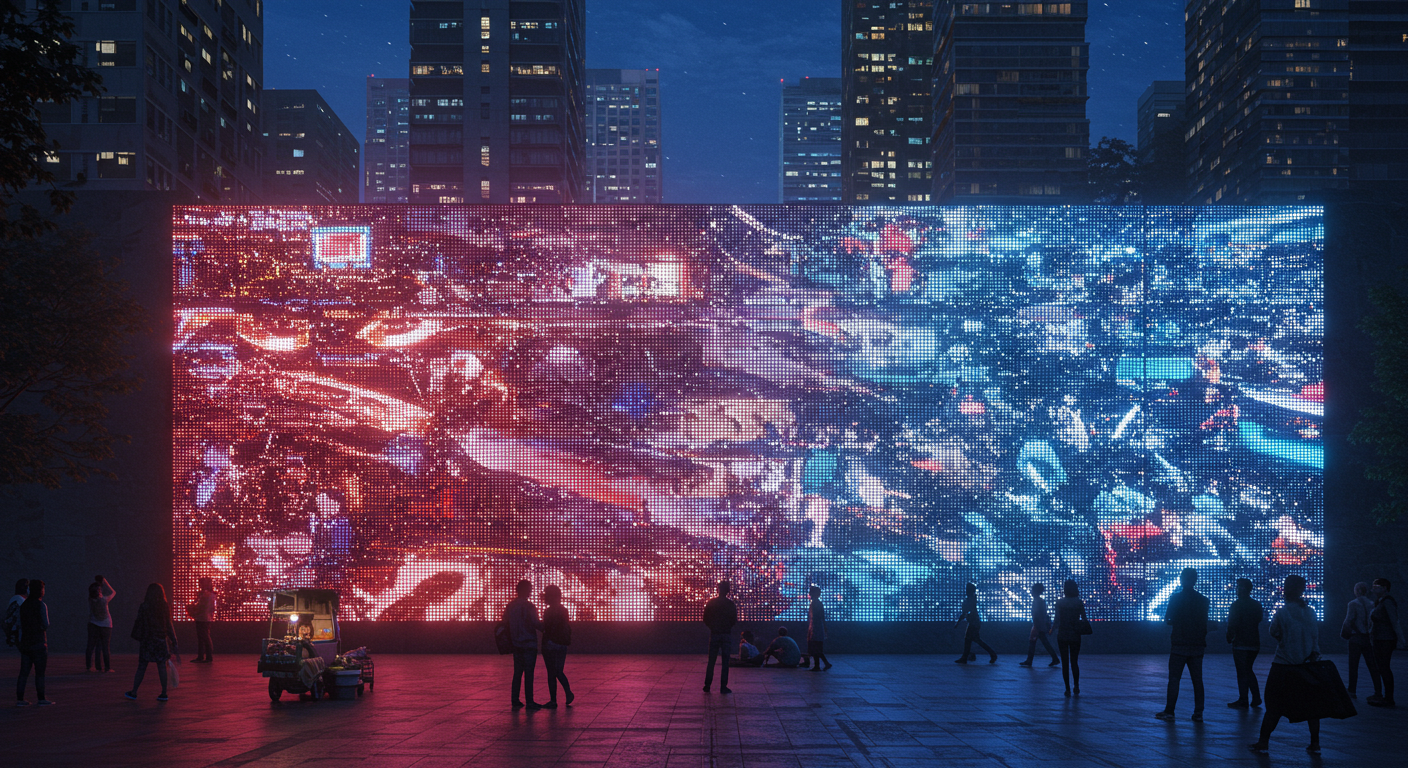There was a time when city walls were silent, their only language the texture of brick, the shadow of a window, or the faded paint of a forgotten sign. They stood as boundaries, not storytellers. That era has dissolved into pixels and lumens. Today, the facades of our buildings have awakened. They breathe light, pulse with color, and whisper—or sometimes shout—narratives to anyone who pauses to look. This silent revolution wasn’t led by architects or urban planners alone, but by a quiet, persistent technology: the outdoor LED screen. It didn’t just change how we advertise; it altered the very soul of urban landscapes, turning static structures into dynamic canvases of collective emotion and identity.
Imagine walking through downtown Dubai as dusk settles. The sky softens into twilight, and then, as if by magic, the buildings ignite. Not with fire, but with moving images. A cascade of digital waterfalls flows down a glass tower. A giant, smiling face winks at pedestrians below. Abstract geometric patterns dance in hypnotic rhythm, synchronized to music only the city seems to hear. This isn’t spectacle for spectacle’s sake. It’s communication in its most visceral form. The city is no longer a collection of inert objects; it has become a living, responsive organism, speaking a visual language understood across cultures and generations.
The true genius of these outdoor displays lies not in their brightness—though they must blaze with enough intensity to conquer the desert sun—but in their resilience. They are engineered warriors, clad in armor against dust, humidity, and torrential rain. Their pixels are sealed, their frames fortified, their cooling systems whispering guardians against the heat. They don’t merely survive the elements; they thrive within them, turning adversity into advantage. A screen that flickers in a storm becomes a beacon of reliability. One that glows steadily under a relentless noon sun becomes a symbol of unwavering presence.
But beyond engineering, there’s artistry. The most compelling outdoor screens don’t bombard you with logos or slogans. They invite you into a moment. A luxury brand might project a slow-motion ballet of fabric swirling in an invisible wind, evoking elegance without uttering a word. A cultural festival might transform a plaza into a kaleidoscope of traditional patterns, connecting the past to the present in a single, luminous glance. The content is curated, not crammed. It respects the viewer’s intelligence and the city’s rhythm. It understands that in a world saturated with noise, the most powerful messages are often the most beautifully restrained.
This transformation has redefined public space. Plazas and boulevards are no longer just transit corridors; they are theaters without tickets, galleries without walls. People gather not just to pass through, but to experience. They tilt their heads back, phones raised not just to capture an image, but to capture a feeling. Children point and laugh as digital butterflies flutter across the pavement. Tourists stand mesmerized, their faces bathed in the glow of a thousand LEDs. The screen becomes a communal hearth, a focal point for shared wonder. It fosters not isolation, but connection—strangers united by a fleeting, beautiful moment painted across the sky.
Even the night has changed. Once dominated by the cold, static glow of streetlights and neon signs, the modern city night is now a symphony of controlled luminescence. Outdoor LED screens don’t just illuminate; they orchestrate. They dim and brighten, shift colors, and tell stories that unfold over hours. They turn darkness from an end into a beginning, a canvas upon which the city’s dreams are projected. The urban night is no longer something to endure, but something to explore, to savor, to be enchanted by.
This is the quiet power of the outdoor LED screen. It is more than technology; it is alchemy. It transforms concrete and steel into emotion and narrative. It turns passive observers into active participants in the city’s ongoing story. It reminds us that our environments are not fixed, but fluid—capable of surprise, delight, and profound connection. The walls no longer confine us. They speak to us. They show us who we are, who we’ve been, and who we might yet become. In their glow, the city doesn’t just exist. It performs. It lives. It tells its story, one luminous frame at a time, to anyone willing to stop, look up, and listen with their eyes.



